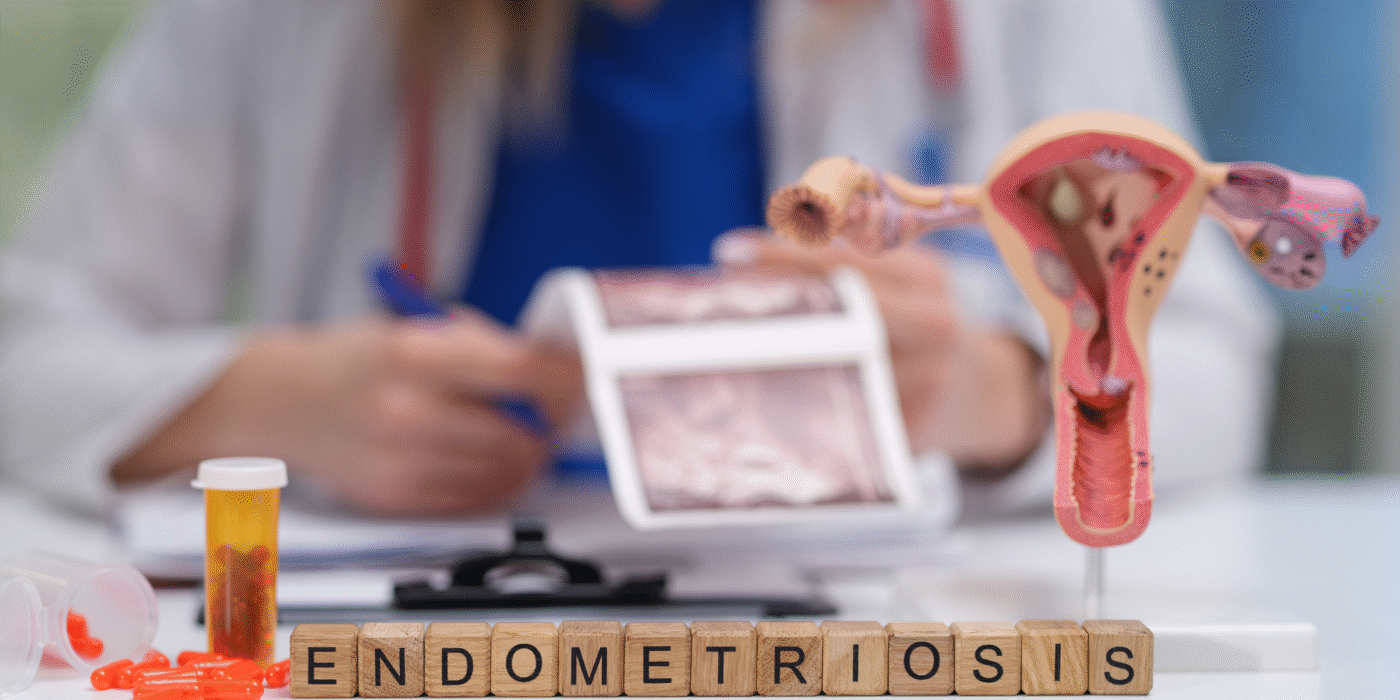Endometriosis and adenomyosis are two chronic gynecological conditions that affect millions of women worldwide. Although often underrecognized, they can have a major impact on quality of life, cause painful symptoms, and be a significant factor in infertility.
Understanding the differences between these two conditions, as well as modern options for diagnosis and treatment, is crucial both for women facing these challenges and for the physicians who treat them.
Endometriosis – when tissue crosses boundaries
Endometriosis is a chronic disease in which tissue similar to the endometrium (the inner lining of the uterus) grows outside the uterus. The most common sites are the ovaries, fallopian tubes, peritoneum, and organs in the pelvic cavity. This tissue undergoes the same monthly hormonal changes as the endometrium, leading to bleeding, inflammation, scar formation, and adhesions.
Symptoms of endometriosis may include:
- Painful menstruation (dysmenorrhea)
- Chronic pelvic pain
- Pain during intercourse (dyspareunia)
- Difficulty conceiving
Adenomyosis – hidden growth within the uterus
Adenomyosis occurs when endometrial cells penetrate into the muscular layer of the uterus (myometrium). This causes thickening and enlargement of the uterus, accompanied by painful and heavy menstruation.
The most common symptoms of adenomyosis are:
- Heavy and prolonged menstruation (menorrhagia)
- Severe menstrual pain
- Enlarged and tender uterus
Diagnosis – why it is challenging
Diagnosis of endometriosis and adenomyosis is often complex because symptoms may be nonspecific or overlap with other gynecological disorders.
Diagnostic methods include:
- Gynecological examination and medical history
- Ultrasound – useful in detecting endometriomas and changes in the uterine wall
- Magnetic resonance imaging (MRI) – the gold standard for visualizing adenomyosis and deep endometriosis
- Laparoscopy – the only reliable method to confirm endometriosis; also allows biopsy
Treatment options
Treatment is individualized, depending on symptoms, severity of the disease, and the patient’s reproductive plans.
- Medical therapy: Hormonal treatments (contraceptive pills, progestogens, GnRH agonists) to reduce symptoms and slow disease progression; NSAIDs for pain relief.
- Surgical therapy: For endometriosis, laparoscopic removal of lesions or endometriomas. However, ovarian surgery may lower ovarian reserve (lower AMH), so it is recommended only for severe symptoms or suspected malignancy. In adenomyosis, surgical reduction of the thickened myometrium can be considered in severe cases, though it is not routine.
Endometriosis, adenomyosis, and infertility
Both conditions can significantly affect reproductive capacity:
- Endometriosis: causes inflammation, adhesions, and reduced egg quality.
- Adenomyosis: can impair embryo implantation and increase miscarriage risk.
Fertility treatment options:
- Natural conception – possible in mild cases with hormonal support.
- Intrauterine insemination (IUI) if fallopian tubes are patent.
- In vitro fertilization (IVF) – preferred in severe cases; stimulation protocols must preserve ovarian reserve.
- Pretreatment with hormonal therapy in adenomyosis – improves implantation outcomes.
- Oocyte cryopreservation – recommended for younger women with endometriosis to preserve fertility.
Conclusion
Endometriosis and adenomyosis are complex conditions that significantly affect women’s health, quality of life, and reproductive outcomes. Although there is no permanent cure, modern diagnostics and reproductive medicine allow symptoms to be managed effectively and pregnancy to be achieved. The key to success is an individualized approach involving gynecologists, fertility specialists, and the patient herself.
References
Chapron, C., Marcellin, L., Borghese, B., & Santulli, P. (2019). Rethinking mechanisms, diagnosis and management of endometriosis. Nature Reviews Endocrinology, 15(11), 666–682. https://doi.org/10.1038/s41574-019-0245-z
Vannuccini, S., & Petraglia, F. (2019). Recent advances in understanding and managing adenomyosis. F1000Research, 8, F1000 Faculty Rev-283. https://doi.org/10.12688/f1000research.17242.1
Zondervan, K. T., Becker, C. M., & Missmer, S. A. (2020). Endometriosis. New England Journal of Medicine, 382(13), 1244–1256. https://doi.org/10.1056/NEJMra1810764
Bulun, S. E. (2009). Endometriosis. New England Journal of Medicine, 360(3), 268–279. https://doi.org/10.1056/NEJMra0804690
Harmsen, M. J., Wong, C. F., Mijatovic, V., Griffioen, A. W., Groenman, F., Hehenkamp, W. J., & Huirne, J. A. (2019). Role of angiogenesis in adenomyosis-associated abnormal uterine bleeding and subfertility: A systematic review. Human Reproduction Update, 25(5), 647–671. https://doi.org/10.1093/humupd/dmz023
Vercellini, P., Consonni, D., Dridi, D., Bracco, B., Frattaruolo, M. P., Somigliana, E., & Fedele, L. (2014). Uterine adenomyosis and in vitro fertilization outcome: A systematic review and meta-analysis. Human Reproduction, 29(5), 964–977. https://doi.org/10.1093/humrep/deu041
Horton, J., Sterrenburg, M., Lane, S., Maheshwari, A., Li, T. C., & Cheong, Y. (2019). Reproductive, obstetric, and perinatal outcomes of women with adenomyosis and endometriosis: A systematic review and meta-analysis. Human Reproduction Update, 25(5), 592–632. https://doi.org/10.1093/humupd/dmz012
Guo, S. W. (2009). Recurrence of endometriosis and its control. Human Reproduction Update, 15(4), 441–461. https://doi.org/10.1093/humupd/dmp007

